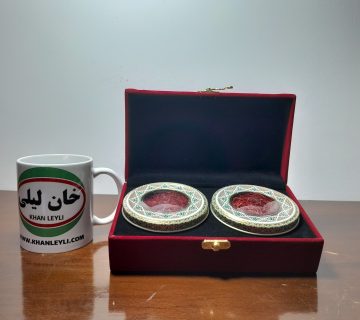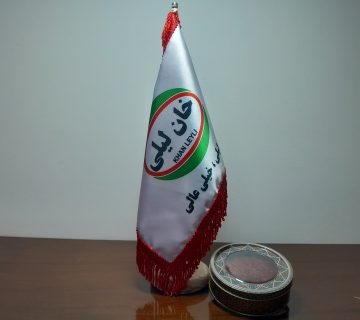Saffron, the exquisite spice derived from the Crocus sativus flower, has long held a revered position in kitchens around the world. Its distinct flavor, vibrant color, and aromatic allure make it a prized ingredient in both traditional and contemporary cuisines. This essay explores the rich history, culinary significance, and diverse applications of saffron in cooking, showcasing how this golden spice has become an indispensable element in the culinary world.
Saffron’s use in cooking traces back through centuries and across diverse cultures. From the royal kitchens of Persia to the paella pots of Spain, saffron has woven itself into the tapestry of culinary traditions. Its association with luxury and royalty has bestowed upon it a status as the “king of spices,” adding regality to dishes that bear its golden touch.
Saffron imparts a unique and complex flavor profile to dishes, characterized by a subtle bitterness, floral notes, and a hint of honey. The spice’s chemical compounds, including crocin and safranal, contribute to its distinctive taste. Whether used in savory or sweet preparations, saffron elevates the flavor palette, transforming ordinary dishes into culinary masterpieces.
One of saffron’s most magical qualities is its ability to impart a rich golden hue to dishes. The vibrant color not only adds visual appeal but also signifies the depth of flavor within. Chefs often refer to saffron as culinary gold, acknowledging its transformative power and the alchemy it brings to the kitchen.
Saffron is a key player in the culinary landscapes of various countries. In Iranian cuisine, it graces rice dishes such as “Zereshk Polo” and “Chelow Kabab,” while in Spanish cuisine, it is an essential component of the iconic paella. Indian cuisine, known for its rich and aromatic spices, uses saffron in biryanis and desserts like “kesar kulfi.” Each region’s culinary identity is enriched by the inclusion of saffron, turning ordinary meals into gastronomic gems.
Saffron’s versatility extends to desserts, where it imparts its golden magic to a variety of sweet creations. From saffron-infused ice creams and custards to the famous Italian “risotto allo zafferano,” the spice adds a touch of luxury and sophistication to sweet indulgences, creating a delightful balance of flavors.
Beyond its culinary prowess, saffron is renowned for its medicinal properties. It has been used traditionally for its anti-inflammatory and antioxidant benefits. Additionally, saffron’s inclusion in dishes is often associated with festive occasions and celebrations, adding an aesthetic dimension to culinary creations.
Harnessing saffron’s full potential requires a delicate art—infusion. Chefs and home cooks alike master the technique of infusing saffron in warm liquids, releasing its color and flavor. This process is crucial in ensuring that saffron’s essence is fully integrated into the dish, creating a harmonious blend of flavors.
In conclusion, saffron’s role in cooking is more than just a culinary ingredient; it’s a testament to the spice’s ability to transform ordinary meals into extraordinary experiences. From its historical significance to its global influence and versatile applications, saffron continues to be a culinary maestro, conducting a symphony of flavors that delights the senses and leaves an indelible mark on the world’s diverse cuisines.
Saffron Symphony: Elevating Culinary Delights with the Golden Spice
In the realm of culinary treasures, saffron stands as a shining star, a golden spice that has graced kitchens and tantalized taste buds for centuries. Known as the “king of spices,” saffron is not just an ingredient; it is a symphony of flavor, color, and aroma that elevates culinary delights to a level of sophistication unparalleled by any other spice.
Saffron’s journey in the culinary world begins with its association with luxury and regality. Historically, saffron adorned the tables of royalty and nobility, its golden threads symbolizing opulence and refinement. Today, its regal status persists, and saffron is revered as a culinary jewel that adds a touch of grandeur to dishes.
What sets saffron apart in the culinary realm is its ability to perform alchemy on the palate. The spice introduces a complex flavor profile marked by a delicate balance of sweetness, bitterness, and floral notes. Whether infused in a savory broth, integrated into a rice dish, or used to season a delicate seafood creation, saffron transforms ordinary ingredients into a symphony of exquisite taste.
Saffron’s most distinctive feature is its ability to impart a rich golden hue to dishes. This visual allure is not merely cosmetic; it is a reflection of the spice’s potency and the depth of flavor it infuses into the culinary canvas. From the radiant yellows of paellas to the golden strands adorning Persian rice, saffron turns ordinary meals into visual feasts.
Saffron’s impact extends far beyond its origins, weaving its golden threads into the culinary tapestries of diverse cultures. In Spain, it takes center stage in the iconic paella, while in Indian cuisine, it imparts its richness to biryanis and desserts. Each culture embraces saffron, integrating it into traditional dishes and creating a global symphony of flavors.
Saffron’s versatility extends to the realm of desserts, where it lends its golden touch to sweet creations. From the saffron-infused elegance of Persian saffron ice cream to the aromatic charm of Indian kheer, saffron serenades the sweet tooth, adding a layer of sophistication to confections and leaving a lasting impression on dessert enthusiasts.
Beyond its culinary allure, saffron carries a rich history of medicinal use. Traditionally valued for its anti-inflammatory and antioxidant properties, saffron brings an additional layer of health benefits to the table. In culinary creations, this adds a harmonious blend of flavor and wellness, making saffron not just a spice but a holistic ingredient.
To unlock the full potential of saffron requires a skilled touch—an understanding of the delicate art of infusion. Chefs and home cooks alike master the technique of coaxing saffron’s essence into warm liquids, allowing its color and flavor to unfurl gradually and weave seamlessly into the dish. This culinary mastery ensures that saffron’s symphony is heard and appreciated in every bite.
In conclusion, the “Saffron Symphony” is a celebration of culinary elegance, where the golden spice takes center stage, conducting a harmonious interplay of flavors, colors, and aromas. As it continues to grace kitchens across the globe, saffron stands as a testament to the enduring magic of spices and the culinary symphonies they create, leaving an indelible mark on the art of gastronomy.
A Culinary Canvas: Mastering the Art of Saffron in the Kitchen
In the world of culinary artistry, saffron emerges as a painter’s palette, a golden pigment that transforms ordinary ingredients into masterpieces of flavor, color, and aroma. This article delves into the nuances of mastering the art of saffron in the kitchen, exploring its history, applications, and the skillful techniques that elevate dishes to a realm of unparalleled sophistication.
Saffron’s use in cooking dates back to ancient times, where it graced the tables of kings and queens, infusing meals with an essence of opulence. Today, this spice remains a symbol of culinary luxury, inviting chefs and home cooks alike to wield it as a brush on the canvas of gastronomy.
Saffron introduces a complex flavor palette, characterized by a delicate harmony of sweet, bitter, and floral notes. To master saffron in the kitchen is to understand its unique taste profile and learn how to balance its intensity, allowing it to enhance the overall flavor profile of a dish without overpowering other ingredients.
The secret to unlocking saffron’s full potential lies in the art of infusion. Whether steeping the threads in warm liquid or grinding them into a powder, the technique of infusing saffron requires finesse. Chefs master this process to ensure the spice’s color, flavor, and aroma are seamlessly integrated into the dish, creating a culinary canvas of rich and immersive experiences.
Saffron’s most visually striking attribute is its ability to imbue dishes with a golden hue. This visual appeal isn’t just for show; it’s a testament to saffron’s transformative power. To master the art of saffron in the kitchen means understanding how to harness its golden touch, turning simple ingredients into visually stunning creations that entice the eyes before tantalizing the taste buds.
Saffron is a spice that transcends geographical borders, weaving its way into the culinary fabrics of diverse cultures. To master saffron is to explore its applications in various cuisines, from the saffron-infused paellas of Spain to the aromatic biryanis of India. Each region adds its unique brushstroke to the canvas, contributing to the global symphony of saffron-infused flavors.
Mastering saffron means recognizing its versatility in the kitchen. Beyond savory dishes, saffron lends its golden touch to desserts, imparting a subtle and aromatic sweetness. From saffron-infused ice creams to delicate pastries, the spice’s ability to harmonize with both sweet and savory profiles makes it a versatile tool in the culinary arsenal.
The art of saffron in the kitchen isn’t just about aesthetics; it’s also about health and well-being. Understanding the spice’s medicinal properties, such as its anti-inflammatory and antioxidant benefits, adds an extra layer of depth to its culinary applications. Mastery of saffron involves appreciating its role in creating dishes that not only delight the senses but also contribute to overall wellness.
To master saffron is to become part of a culinary legacy. The spice’s rich history, its association with royalty, and its enduring appeal in modern kitchens contribute to a legacy that spans centuries. Those who wield saffron with mastery become custodians of this culinary heritage, adding their strokes to an ever-evolving masterpiece.
In conclusion, mastering the art of saffron in the kitchen is a journey of exploration, technique, and appreciation for a spice that transcends culinary boundaries. As chefs and home cooks embrace saffron as a culinary canvas, they become artists, creating vibrant and memorable dishes that celebrate the golden symphony of this remarkable spice.
Golden Elixir: Unveiling the Magic of Saffron in Cooking
Saffron, the ethereal spice derived from the Crocus sativus flower, transcends the realms of ordinary culinary ingredients, earning its title as the “Golden Elixir” that weaves enchantment into dishes. This essay delves into the mystical world of saffron, unraveling the magic it brings to the art of cooking—transforming the mundane into the extraordinary and elevating the culinary experience to a level of unparalleled splendor.
- A Glimpse into Saffron’s Origins
The journey into saffron’s magic begins in the ancient lands where it was cultivated and revered for its opulence. The spice’s origins trace back to the sun-soaked fields of Iran and other regions with the ideal climate for the delicate Crocus sativus. From these lands emerged a golden elixir that would captivate the palates of civilizations through the ages.
- The Spellbinding Flavor Symphony
At the heart of saffron’s enchantment lies its unparalleled flavor symphony. The spice introduces an intricate dance of sweet, bitter, and floral notes, weaving a tapestry of taste that lingers on the taste buds. Whether infused in a savory broth, delicately sprinkled on rice, or swirled into a sweet dessert, saffron’s magic transforms the ordinary into a culinary masterpiece.
- The Alchemy of Color
Saffron’s golden hue is more than a visual spectacle; it’s a manifestation of culinary alchemy. As it infuses its color into dishes, it doesn’t just paint them with gold; it imparts a richness that speaks of depth and complexity. The transformation of a dish’s appearance is a key aspect of saffron’s magic, captivating the eyes before the first taste.
- Culinary Artistry in Every Strand
To unveil the magic of saffron in cooking is to appreciate its role as a culinary artist’s tool. Each delicate strand carries the essence of meticulous harvesting and a history rich in tradition. Chefs and home cooks alike recognize that handling saffron is not merely a culinary task; it is an act of artistry, a careful brushstroke on the canvas of gastronomy.
- Global Allure and Culinary Fusion
Saffron’s allure extends across borders, enriching cuisines worldwide. From the aromatic paellas of Spain to the saffron-infused biryanis of India, the spice weaves its magic into diverse culinary traditions. Its ability to harmonize with a variety of ingredients makes it a sought-after element in the global fusion of flavors.
- Medicinal Elixir and Well-being
Beyond its culinary magic, saffron is revered for its medicinal properties. The spice’s compounds, such as crocin and safranal, contribute to its anti-inflammatory and antioxidant benefits. To cook with saffron is to infuse dishes not only with flavor but also with a touch of well-being—a golden elixir that nourishes both body and soul.
- Culinary Rituals and Celebrations:
Saffron’s magic extends to the realm of rituals and celebrations. Its presence in festive dishes signifies more than just a culinary choice; it represents tradition, luxury, and the joyous spirit of special occasions. The inclusion of saffron in celebratory feasts becomes a culinary ritual, creating memorable moments that linger in the collective consciousness.
- Culinary Legacy and Future Enchantment:
To grasp the magic of saffron is to become part of a culinary legacy, an ongoing story of enchantment passed down through generations. As chefs and home cooks continue to experiment with this golden elixir, they add their chapters to the ever-evolving tale of saffron’s magic. The spice’s future enchantment lies in the hands of those who embrace its golden legacy and weave it into the culinary narratives of tomorrow.
In conclusion, saffron’s magic in cooking is a journey through history, flavor, and visual splendor. As the “Golden Elixir,” it beckons culinary enthusiasts to partake in its enchantment, inviting them to create dishes that transcend the ordinary and celebrate the extraordinary alchemy of saffron-infused gastronomy.








No comment